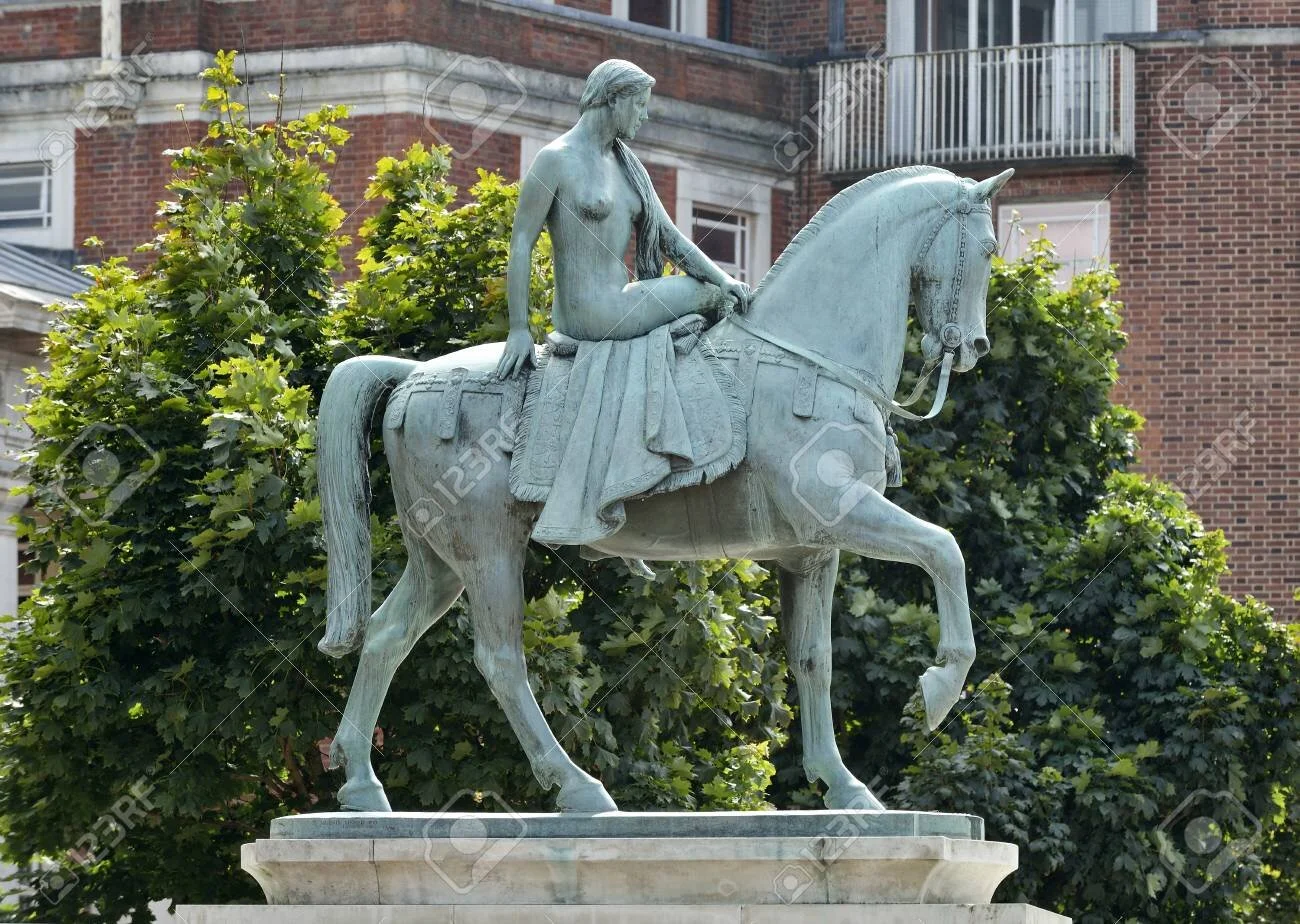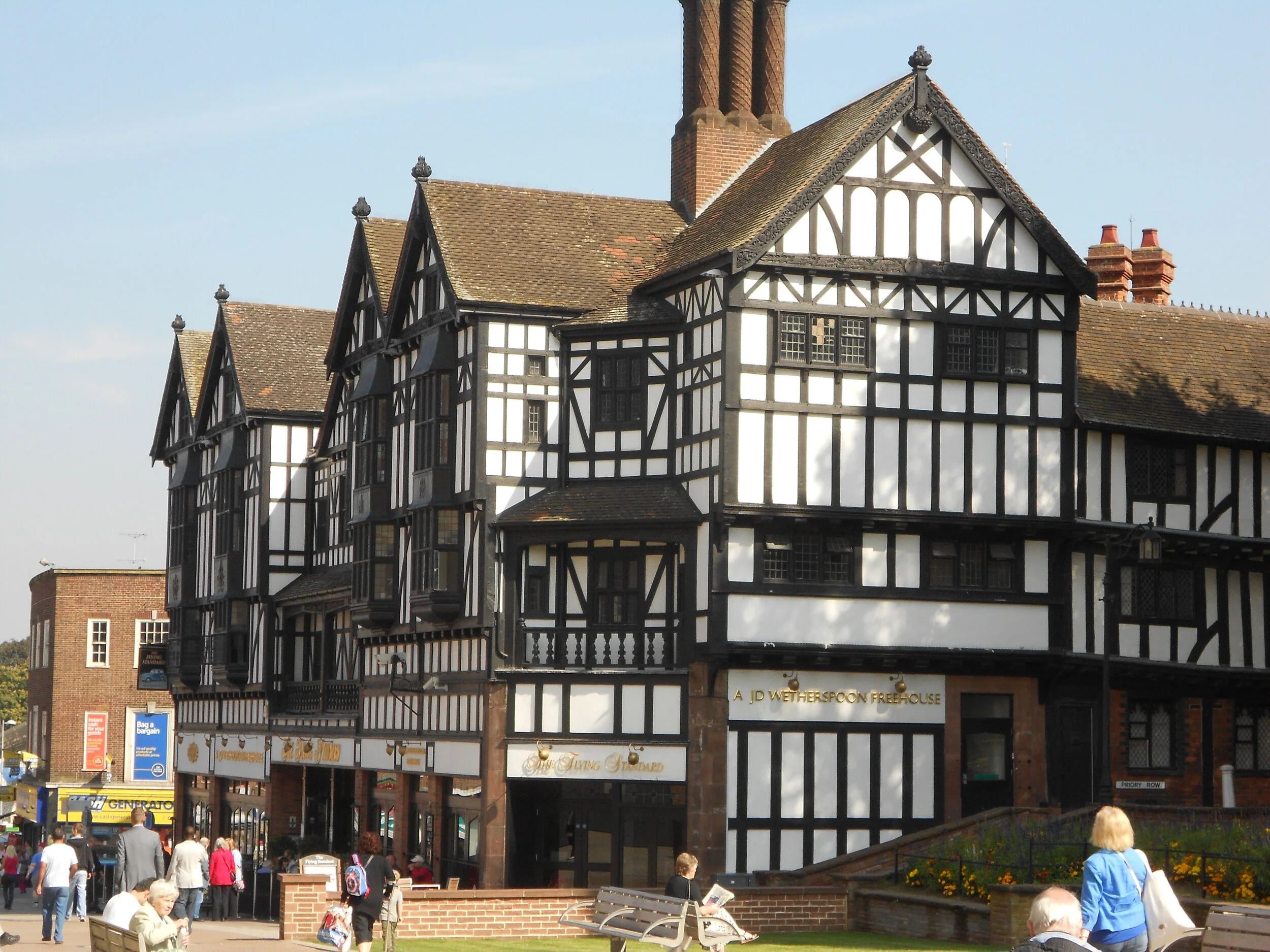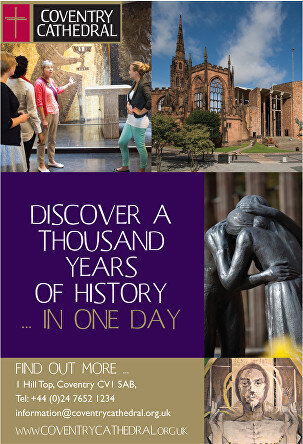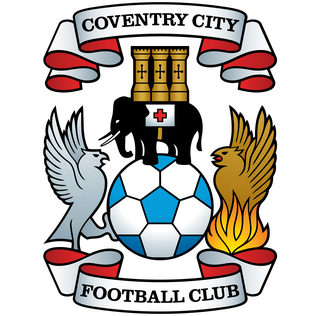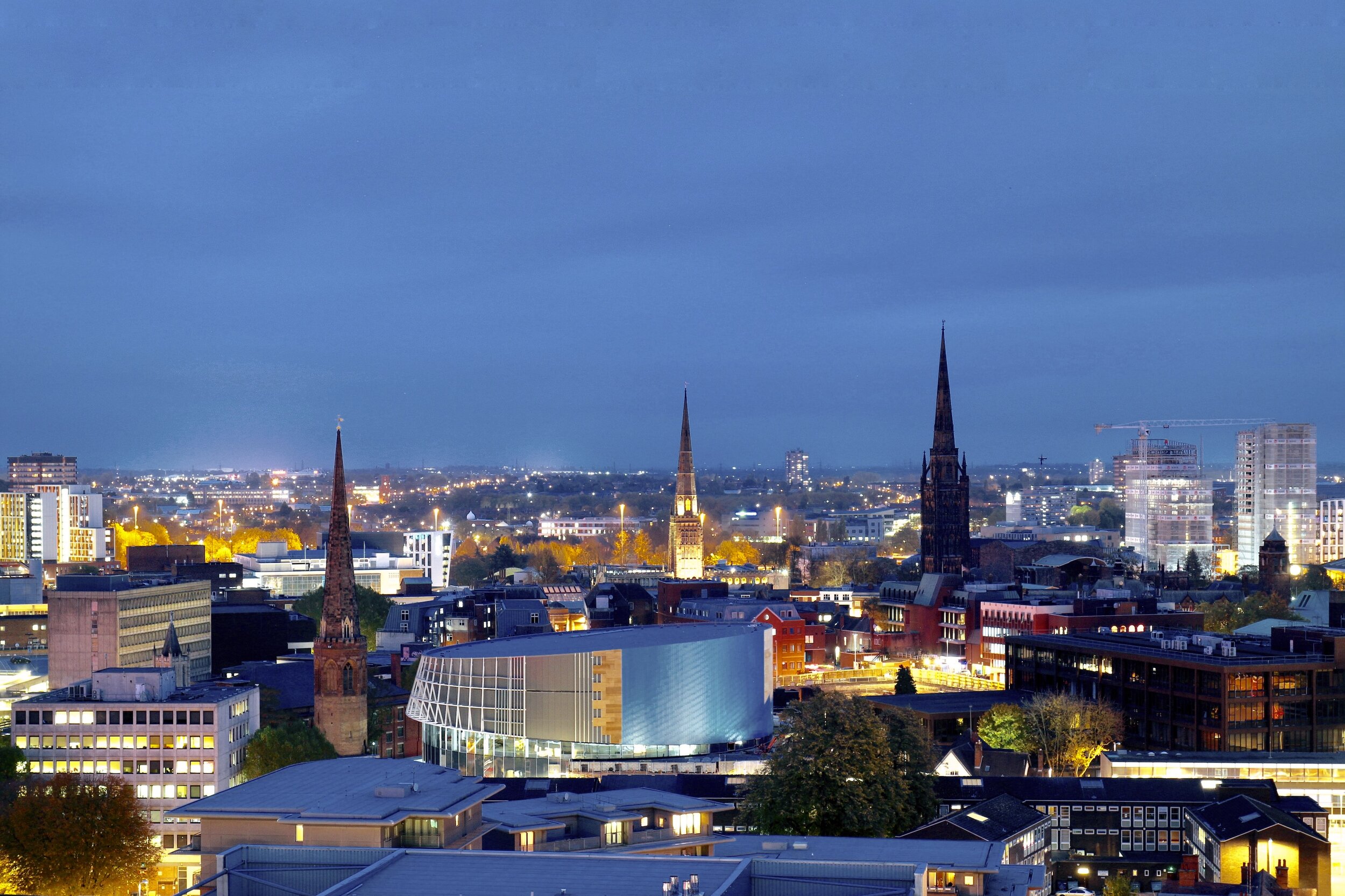
Coventry
Ricoh Arena. Home of Coventry City
Cathedral
Transport Museum
Lady Godiva Statue
Historical Buildings
Warwick Castle
Introduction:
Coventry was a medieval city that was nearly completely destroyed in World War Two. It has been rebuilt as a major industrial city and is located in West Midlands not far from Birmingham. The current population is 312,000.
Brief History:
The city origins would appear to have started in Saxon times when a village called Coffantree was known to exist on its site. Coventry appeared in the Domesday Book with a population of 350.
In the mid 11th century a Benedictine monastery was established by Earl Leofric and Godiva, his wife. They allowed the monks to graze sheep and this was the start of the local wool industry. It then came about that Leofric started to tax the local people heavily and Godiva begged him to stop doing so. He jokingly said that if Godiva rode naked through the town he would cut the taxes. She obliged and the rest, is, as they say, history.
In 1345 the town was granted a charter, making it a city.. The medieval trades were wool dyeing and weaving, together with drapers, tailors, leather workers, shoe making and glove makers. These were backed by coopers, blacksmiths, carpenters and goldsmiths. All these trades formed a guild and St. Mary’s Hall was built as a meeting room.
A stone wall was commenced around the town in 1335 but not completed until 1538. A castle was also constructed.
In the 16th century Coventry had a population of 6500.
The start of the 17th century saw a severe outbreak of plague in 1603. In 1642 the civil war commenced and the city stayed in Parliamentary hands throughout the conflict. Prisoners were held in St. John’s Church and this created the well known saying of being “sent to Coventry”. In 1662 Charles II ordered the destruction of the city walls.
The population at the beginning of the 19th century was 16,000 and at the end, 62,000. Much happened during this century. Gas lighting, a police force, railways, sewers, trams and a Technical Institute were introduced. Electric generation was commenced in 1895. The downside was a smallpox epidemic in 1871.
Likewise, the silk industry was killed by imports but a raft of new products began production, including, watch making, bicycles and motor cars.
The 20th century saw rapid expansion which brought ambulances, cinemas, buses and council housing.
In 1919 the parish church became the now famous St. Michael’s Cathedral.
Sadly, Coventry’s world fame came about because of the horrendous bombing raids it endured in World War 2. This culminated in a near complete destruction of the city centre including the ruin of the cathedral.
The rebuilding of the city began immediately after the war and the fantastic new Coventry Cathedral was rebuilt and opened in the early 1960’s.
The end of the 20th century saw the establishment of a University and the economy was still based on car production, engineering and electronics.
The 21st century has seen the commencement of enhancing the city centre which had, in reality, been rebuilt after the war as a concrete jungle.
Things to Do:
Cathedral:
The modern diocese of Coventry came into being in 1918 and St. Michaels was chosen as the Cathedral. Sadly, the cathedral became the focus of Britain’s determination to succeed in World War 2, when on the night of 14th November 1940 the building was destroyed by German bombing. The very next morning it was vowed to rebuild the cathedral.
The new, modern structure was commenced after the war, designed by Sir Basil Spence and Queen Elizabeth II laid the foundation stone in 1956. It was always known that the remains of the destroyed cathedral would be incorporated alongside the new. In the Queen’s presence the project was consecrated in 1962.
Coventry Transport Museum:
As the centre of the British motor and cycling manufacturing industries it is right that such a museum exists in the city. Located in Millennium Place, Hales Street, entrance is free and the museum is open daily from 10am to 5pm. There are over 650 objects, including cars, commercial vehicles, motorcycles and cycles and many are still working.
A star attraction is the fastest car in the world.
Cook Street Gate:
A section of the old city wall, Cook Street Gate, built in 1385 can be seen. Swanswell Gate nearby, is the only other gate left of Coventry’s original twelve.
Herbert Art Gallery and Museum:
Located opposite St. Michaels Cathedral, this modern building is home to the history of Coventry and also houses an impressive art collection. Entrance is free and is open until 4pm every day.
Heritage Motor Centre:
Located in Banbury Road, Gaydon, this collection of over 300 cars is the biggest collection of British cars in the world.
The cars are classic, vintage and veterans. The centre is family friendly, has a café and play areas and is open daily.
St. Mary’s Guildhall:
Located in Bayley Lane, Coventry, this is probably England’s finest medieval guildhall.
It contains beautiful interiors, armour and art work. In its lifetime it has been a prison to Mary Queen of Scots and also a Shakespearian theatre.
Entry is free, and there is a café, but it is only open between March and October.
Spon Street:
Possesses a concentration of Tudor buildings, many saved from demolition in other parts of the city. Cafes and restaurants are located in the street.
Sport:
The city boasts much sport with clubs throughout. Also, on a national platform the city has a Rugby Union Club and an Ice Hockey team named Coventry Blaze. There is also a Dog Racing track.
Other Local Places of Interest:
Coventry is fortunate to have nearby some famous and historical Warwickshire towns:
Kenilworth, and its haunting ruined castle.
Stratford-upon-Avon, the home of Shakespeare and the Shakespeare Memorial Theatre.
Warwick, with its beautiful medieval castle.
Night Life:
Rather than have a concentration of bars and clubs in one street or central area, night life in the city is spread throughout.
Skydrome Complex:
Located in Croft Road this is a multi use centre and contains bars, restaurants, night clubs, cinemas, casino and a ice hockey and skating stadium, which holds 3000.
Inspire:
this Union Street bar is literally in an old spire. It is small but has a good selection of beers, drinks and food. Independent newspaper named it as one of the UK’s top fifty nightspots.
Jordon Well Area:
if you head towards Coventry university this small area is favoured by students and younger people. Three bars and a couple of nightclubs serve this quarter.
Belgrave Theatre:
Named after the Serbian capital, who supplied much of the wood for the construction of the theatre, the Belgrade was built in 1956 as part of the city reconstruction. It is the only professional theatre in the city and the cultural centre. Located in Belgrade Square the building also contains bars and grills.
Cinemas:
There are two cinema complexes in the city:-
The Odeon at Skydrome Complex with 9 screens and Showcase Complex at Walsgrave which has 14 screens.
Eating Out:
There are many eating places throughout the city for breakfast, lunch and dinner. Shopping centres and visitor attractions have cafes for coffee and lunches. Being an industrial city with a large ethnic population there are restaurants selling English, European, Chinese, Indian, Middle Eastern etc. fare.
Good food is always available from the city pubs and those in nearby villages.
Shopping:
The post war shopping experience in Coventry is a complete reversal to the pre war way of shopping. The second world war saw the city centre, including the main shopping streets, bombed away.
The 1950’s saw major regeneration of the city centre and probably the first modern shopping mall in the UK was constructed.
Currently, the city shops consist of all the major retailers found on all British High Streets. Now, though, new shopping centres have been developed, including West Orchards, High Street, Greyfriars Walk and Cathedral Lanes.
Broadgate has a statue of Lady Godiva and nearby is the Broadgate Clock which shows an hourly animation of Lady Godiva and Peeping Tom.
In Queen Victoria Road is the 170 stall market.
Accommodation:
With over 50 hotels and guest houses in the city finding a room should be no problem. There are national and international chains and prices range from budget to four star.
Pubs are also a good alternative for overnight stays.
Transport:
Road:
Coventry is literally surrounded by motorways. The M1 whisks you from London in the south or from North East England to a few miles east of the city. The M6 leaves the M1 just above the north of the city and takes you to and from Birmingham and the North West. The M42 lying to the west of the city connects to M5 through to Bristol, South West and South Wales and also connects to M40 for Oxford, South of England and west of London.
A short section of motorway the M45 leads from the M1 to the outer east boundary of the city.
Rail:
Coventry Station, situated to the south of the city centre, lies on the main line from London Euston to Birmingham, Manchester, Glasgow and Edinburgh. The city is also connected to Stoke-on-Trent, Bournemouth and locally, Nuneaton. Connections to the rest of the country can be made via the above cities and towns.
Bus:
Network West Midlands operate an extensive service throughout the city centre and suburbs, with connections at the Railway Station and Bus Station. There are also connections to the other West Midland towns and cities.
Within the city boundary is a Park and Ride scheme.
National Express connects the city with the rest of the country.
Air:
Birmingham International Airport lies west of the city with a good connection by both train and bus to the city centre.
CLUB
COVENTRY CITY
Stadium: Ricoh Stadium. Phoenix Way. Coventry CV6 6GE.
Founded: 1883
Joined League: 1919
Chairmen: Joy Seppala/Dermot Coleman
Manager: Mark Robins
Current League: Championship
Phone number: 02476 992326
Email address: info@ccfc.co.uk
Brief History:
The club was formed in 1883 by an employee of Singers cycle company. The original name was Singers FC which was changed to Coventry City in 1898. Matches were played first at Dowells Field, followed by Stoke Road until moving to the spiritual home, Highfield Road, in 1899.
The club played in the Birmingham League from 1894, followed by the Southern League in 1908 and then was invited to join the second tier of the Football League in 1919. City lost the first League match 0-5 and avoided relegation on the last day of their first season.
The first relegation arrived in 1925 but they bounced back to Division 2 in 1936. In 1938 the club missed out on promotion to top flight by one point.
In 1952 came relegation to Division 3 South and in 1958 City became an original member of the then new Division 4, for one season.
Fortunes changed in 1961 when Jimmy Hill was employed as manager and in 1964 got the club back up to the second tier. In 1967 the promised land of the First Division was achieved in a season that saw a record attendance of 51455. The highest ever League position, sixth, was achieved under manager Noel Cantwell in 1969/70. This led to one campaign in Europe. They beat the Bulgarian side Trakia Plovdiv but were then beaten 1-6 by Bayern Munich
In 1981 Highfield Road became the first all seater stadium in English football.
The club won the FA Cup in 1987, beating Tottenham Hotspur, but failed to beat Everton to also win the Charity Shield.
The Sky Blues were original members of the Premier League but were relegated in 2001 after 34 years in top flight.
After 106 years at Highfield Road the club moved into the Ricoh Arena in 2005. In 2012 the club returned to the third tier and after a rent dispute City left the Ricoh and arranged a ground share with Northampton Town from season 2013/14. After just one year the club moved back to the Ricoh in September 2014.
At the end of season 2016/17 the Sky Blues were relegated to League 2 but bounced back to League One at end of 2017/18 season.
Honours:
FA Cup 1987
Match Day:-
Tickets:
Away fans should check with their own club regarding tickets.
For all other ticket information and purchasing contact:-
ticket.office@ccfc.co.uk or by phone on 024 7699 1987
Transport:
Road:
If travelling from the North use the M6 or M1. If using the M1 join the M6 at Catthorpe Interchange and exit motorway at J3. then join the A444 heading south. If using the M6 exit at J3 and then as for M1 details.
If travelling from the South use the M1 and join the M6 at Catthorpe Interchange and leave the motorway at J3 as before described for north.
Contact the club regarding parking at Car Parks A.B.C.
Bus:
From the station take bus no.8 to Coventry Transport Museum.
From Coventry Transport Museum take buses 4 or 5 to Arena Park then walk through underpass to the Ricoh.
For bus routes from the general environs of Coventry visit www.nxbus.co.uk/local/west-midlands.
Train:
The city lies on the main London-Birmingham line.
Information regarding timetables and ticket prices for all routes to Coventry can be found at www.nationalrail.co.uk.
Air:- see above.
Stadium:
After spending years at Highfield Road the club moved into the Ricoh Stadium in 2005. After a dispute they vacated the ground and played at Sixfields, Northampton for one year.
With an all seater capacity of 32500, the stadium is made up of four stands.
The North, East and South stands are single tier structures. The video screen is placed between the South and East Stands and the "Sky Blues Wall of Fame" sits outside the East Stand.
The West Stand, known as Lloydspharmacy Stand, has a large lower tier, topped by hospitality boxes, which is topped by a smaller tier of seats.
Around 3000 away supporters are housed in Blocks 6 and 7 of the South Stand. There is a spacious concourses for visitors serving usual fare of food and drinks. There are also a number of TV screens.
Outside of the ground the Arena Shopping Centre has a good range of cafes, takeaways and mobile outlets.
A good selection of pubs can be found on Longford Road.888-1889.



